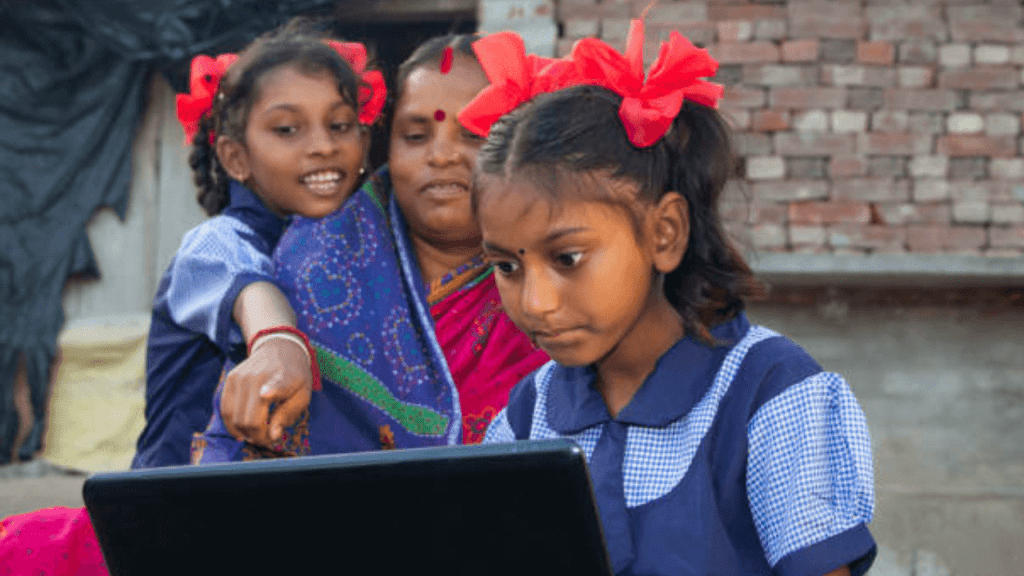To overcome the diverse challenges hindering problems of women’s education in India, a comprehensive strategy is essential. This approach should encompass initiatives to enhance educational access by investing in infrastructure, especially in remote areas, while simultaneously addressing socio-economic obstacles. Efforts should be directed at challenging ingrained cultural norms and biases, with a particular emphasis on dispelling gender stereotypes. Quality improvement measures, including teacher training and curriculum updates, are crucial to ensure that educational opportunities translate into meaningful learning experiences for girls.
Creating a secure environment through robust safety measures is imperative to allay parental concerns and boost female enrollment. Recognizing the intersectionality of socio-economic factors and education, targeted financial assistance and scholarship programs should be introduced to break the cycle of poverty that hampers girls’ education. In essence, fostering women’s education in
India requires a concerted effort to dismantle barriers at every level, promoting equality and empowerment for generations to come.
Problems of Women’s Education in India
Societal Norms and Cultural Barriers:
- In many parts of India, traditional gender roles and societal expectations limit the opportunities for women to pursue education.
- Deep-rooted cultural norms often prioritize marriage over education for girls, perpetuating the cycle of limited female access to learning.
2. Economic Constraints
- Economic disparities create hurdles for families to afford education for their daughters, leading to a preference for investing in the education of male children.
- Lack of financial resources often forces girls to drop out of school prematurely, hindering their academic and professional growth.
3. Infrastructure and Accessibility
- Insufficient educational infrastructure, especially in rural areas, poses a significant challenge. The lack of schools and inadequate facilities disproportionately affects girls.
- Limited access to transportation options and safety concerns contribute to a decrease in girls’ school attendance, particularly as they approach adolescence.
4. Child Marriage and Early Parenthood
- The prevalence of child marriage remains a critical issue, directly impacting a girl’s ability to continue her education.
- Early motherhood can disrupt a girl’s educational trajectory, as responsibilities at home take precedence over formal learning.
5. Confronting Gender-Based Violence and Harassment: A Call to Action
- The apprehension of experiencing gender-based violence and harassment, both during the journey to school and within educational institutions, discourages numerous girls from actively seeking an education.
- The absence of a secure and supportive environment hampers the academic progress of female students.
Factors Affecting Women’s Education in India
Family and Community Attitudes:
The attitudes of families and communities play a pivotal role in determining the importance placed on women’s education. Shifting these attitudes is crucial for societal change.
Government Policies and Implementation:
Effective implementation of policies promoting female education is essential. This includes ensuring that financial aid and scholarships reach those in need and that schools are adequately equipped.
Awareness and Advocacy:
Increased awareness about the benefits of women’s education, coupled with advocacy efforts, can contribute to changing societal mindsets and challenging stereotypes.
Disadvantages of Female Education in India
It’s important to note that the disadvantages associated with female education are often rooted in societal misconceptions and biases. Nevertheless, some perceived disadvantages have been historically raised, though they are not inherently valid or justifiable:
- Traditional Gender Norms: In some conservative societies, the pursuit of education by females is viewed as a departure from traditional gender roles. This can lead to resistance and societal pressure against girls seeking higher education.
- Economic Concerns: Families may perceive investing in the education of girls as financially burdensome, especially in regions where economic resources are limited. This perspective might result in fewer educational opportunities for female family members.
- Early Marriage Pressures: Pursuing education may delay the age at which girls are deemed suitable for marriage in certain cultures. Families may prioritize early marriages over extended education for their daughters due to prevailing social norms.
- Resistance to Change: In communities with deep-seated cultural norms, the empowerment that comes with education for females may be met with resistance. This resistance may be rooted in a fear of disrupting established power dynamics.
- Limited Employment Opportunities: In societies where certain professions are considered inappropriate for women, investing in their education may be perceived as futile. This mindset limits the career choices available to educated females.
It is crucial to recognize that these perceived disadvantages are based on outdated and discriminatory views. In reality, empowering women through education has been consistently proven to benefit societies by fostering economic development, improving health outcomes, and promoting overall societal progress.
How to Improve Female Education in India
Improving female education requires a comprehensive approach across societal, institutional, and individual levels. Here are practical strategies to enhance opportunities for girls:
- Equal Access to Education: Ensure that girls have the same chances to access education by investing in infrastructure, especially in rural areas, to establish safe and accessible schools.
- Financial Support and Incentives: Introduce financial aid programs, scholarships, and incentives to ease economic barriers preventing girls from pursuing education. This may involve providing uniforms, textbooks, and transportation support.
- Community Engagement: Change societal attitudes towards the importance of female education through awareness campaigns. Engage with communities, parents, and local leaders to dispel myths and challenge gender stereotypes.
- Teacher Training and Curriculum Reform: Improve education quality by investing in teacher training and updating curricula to be inclusive and gender-sensitive. Ensure educational materials promote equality and diversity.
- Safe and Inclusive Learning Environments: Implement stringent measures to ensure the safety of girls in schools, addressing gender-based violence and harassment. Foster an inclusive atmosphere that promotes respect and equality.
- Early Childhood Education: Promote early childhood education for girls to establish a strong foundation for future learning and challenge stereotypes from a young age.
- Technology Integration: Use technology to overcome geographical barriers and enhance educational resources. Online platforms and digital resources can provide flexible and accessible education, especially in remote areas.
- Government Policies and Legislation: Advocate for and implement policies supporting female education, including laws promoting gender equality, anti-discrimination measures, and targets for female enrollment and retention.
- Partnerships and Collaborations: Forge partnerships between government bodies, NGOs, and local communities to create a coordinated effort in promoting female education.
By implementing a combination of these strategies, societies can work towards creating an environment where female education is not just encouraged but fully supported, leading to empowerment, gender equality, and overall societal progress.
Conclusion
In closing, the journey to enhance women’s education in India requires a collective and persistent effort from all segments of society. By openly acknowledging and addressing the challenges at hand, we can set the stage for meaningful and transformative change.
It’s crucial to challenge societal norms and encourage a shift in how we perceive gender roles. Families play a key role in this transformation by recognizing the inherent value of educating their daughters. Creating an environment where every girl can pursue her aspirations without limitations is fundamental.
Community involvement remains pivotal. Continuous awareness programs should highlight the broader impact of women’s education on society, generating widespread support for positive change. An educated woman catalyzes transformative progress, influencing not only her immediate surroundings but also contributing significantly to the collective advancement of the nation.
In our pursuit of closing the gender education gap, let’s perceive women’s education not merely as a challenge but as an investment in fostering a more enlightened and fair society. Empowering women through education signifies a commitment to shaping a future where every girl can unlock her full potential, thereby contributing to a nation that flourishes on inclusivity and equal opportunities. Together, let’s embark on this journey toward a more radiant and equitable tomorrow.
FAQs
- How does early marriage impact women’s education?
Early marriage disrupts a girl’s education, limiting her opportunities for academic and professional growth. Efforts to address and eradicate child marriage are essential for promoting women’s education.
- How do societal attitudes impact women’s education in India?
Societal attitudes play a crucial role, with traditional gender roles often limiting opportunities for women. Shifting these attitudes is essential for fostering a supportive environment for female education.
- What role do government policies play in addressing women’s education challenges?
Effective implementation of gender-neutral education policies is vital. Ensuring that financial aid and scholarships reach those in need and that schools are well-equipped contributes to overcoming educational challenges for women.
- How can communities contribute to improving women’s education?
Communities can actively engage in awareness programs to highlight the importance of women’s education. This involves challenging stereotypes and fostering an environment where families prioritize and support the education of their daughters.
- Why is community engagement important in improving women’s education?
Community engagement is essential for building support and awareness. Communities can actively contribute to changing societal perceptions and creating an environment where women’s education is valued and prioritized.
Related Posts:
Top 10 Advantages of Girl Child Education in India
How to Improve Girl Child Education?
What is Child-Centered Education
What is the Purpose of education and Why It is Important?


I have a great command of sophisticated language and literature because I am an artist at heart as well as a writer by profession. I am able to constantly produce work of a high quality because of my knowledge. I’m well-known for my versatility and am an excellent writer of both creative and technical content. To write content that is both entertaining and customized, I take the approach of getting to know the interests and preferences of my targeted audience.

